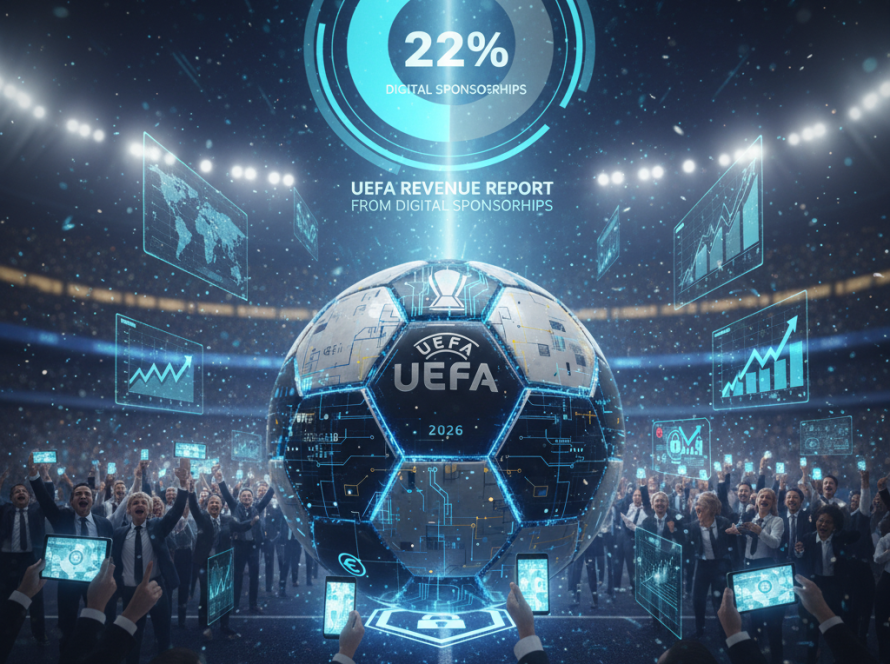The future of football analytics has arrived, and it speaks in data. Artificial intelligence is transforming how clubs measure performance, scout talent, and make tactical decisions. From predictive injury models to real-time positional mapping, AI-driven performance metrics are redefining the very fabric of how football is played and managed. What used to rely on intuition and post-match reviews is now a science of probabilities, pattern recognition, and machine learning precision.
Across Europe, elite clubs are investing heavily in AI systems that analyze millions of in-game data points per second. This technology is no longer limited to measuring speed or distance covered it interprets player intent, decision efficiency, and spatial influence. The rise of AI metrics marks a new era where algorithms and analytics become as central to success as strategy and skill.
From Intuition to Intelligence: How AI Measures the Unseen
Traditional football statistics have always captured what happened on the pitch passes, shots, tackles but not why it happened. AI changes that. Using deep learning models trained on historical match data, AI systems now detect patterns that humans miss. They can identify whether a midfielder’s movement created space three passes before a goal, or whether a defender’s positioning prevented an off-ball threat.
These models break the game into micro-events. Each player’s contribution is scored not only by possession but by contextual impact. A single off-ball sprint that disrupts an opposing formation might carry the same weight as an assist. This data-driven precision enables clubs to value players beyond traditional metrics.
“AI allows us to measure influence, not just involvement,” said a performance analyst at a top Premier League club. “It quantifies things coaches always sensed but couldn’t prove. Now, intuition has evidence.”
Leading analytics firms like Stats Perform, SkillCorner, and Zone7 are developing AI dashboards that combine positional tracking, physiological data, and match intelligence. These systems use predictive modeling to assess player readiness and tactical fit. Coaches can now simulate how lineup changes might alter passing networks or defensive compactness before a game even starts.
The Tactical Revolution: Real-Time Data as Strategy
In modern football, decisions made in milliseconds can decide entire seasons. AI analytics are giving coaches and analysts live feedback loops that influence match management in real time. Wearable sensors, optical tracking cameras, and on-field IoT devices feed continuous data into AI systems that update tactical heatmaps during matches.
The result is what some analysts call “dynamic decision-making” an approach where substitution timing, pressing intensity, and formation adjustments are data-informed rather than instinctive. Clubs such as Manchester City, Barcelona, and Bayern Munich are reportedly integrating AI tools that provide immediate tactical insights to coaching staff mid-game.
AI also plays a growing role in injury prevention and workload management. By comparing biometric data with historical training loads, algorithms predict injury risk levels for each player. Medical teams can adjust recovery schedules and session intensity accordingly. These systems are already credited with reducing soft-tissue injuries by up to 20 percent in early adopter clubs.
Scouting departments have also embraced AI analytics. Machine learning models now evaluate potential signings by analyzing performance patterns across leagues and competition levels. Instead of focusing on raw statistics, AI identifies players whose tactical attributes best match a club’s system. This approach minimizes transfer risk and enhances long-term squad planning.
The Economics of AI: Value, Efficiency, and Transparency
Beyond tactics, AI performance metrics are reshaping the economics of football. Clubs now use data models to assign more accurate valuations to players, reflecting true contribution rather than market hype. Transfer negotiations increasingly include analytical performance indexes as part of due diligence.
Investors and sporting directors are leveraging AI dashboards to forecast return on investment for player acquisitions, training programs, and even sponsorship impact. The transparency that AI provides is also reshaping media and fan engagement. Broadcasters are incorporating AI metrics into live commentary, explaining the science behind on-field decisions to viewers in real time.
The implications extend to betting markets and fantasy leagues, where AI-driven predictive analytics enhance fairness and engagement. In parallel, regulatory bodies like UEFA and FIFA are exploring frameworks to standardize the ethical use of AI in data processing, ensuring privacy and compliance.
According to a 2025 report by Deloitte’s Sports Technology Insights, AI adoption in European football analytics is projected to grow by 65 percent over the next three years, with mid-tier clubs leading the acceleration. What began as a high-cost innovation for elite teams is rapidly becoming accessible through cloud-based data services and AI-as-a-service models.
Challenges and the Human Element
Despite the rapid progress, challenges remain. Data quality, interpretation bias, and ethical concerns around player monitoring continue to shape the debate. Critics caution that overreliance on AI may reduce the human spontaneity that makes football unpredictable and emotionally compelling.
Coaches and players must learn to coexist with machine intelligence, using it as an assistant rather than a replacement. Successful clubs are investing in hybrid structures where AI informs but does not dictate decisions. “Technology should empower intuition, not override it,” said a La Liga technical director. “Football is still a game of humans the data just helps us see it more clearly.”
Conclusion
AI performance metrics are not just revolutionizing football analytics; they are redefining the sport’s intellectual core. From recruitment to recovery, every decision is being informed by data that quantifies effort, intelligence, and impact. The game is becoming smarter, faster, and more transparent built on a foundation of measurable truth. As AI continues to evolve, football is discovering that its greatest innovation is not in automation but in amplification. The future of the sport lies in a partnership between human instinct and artificial intelligence, where every pass, sprint, and decision can finally be understood in full context.




